Syntaxerror: Eol While Scanning String Literal
Causes of a syntax error: EOL while scanning string literal
1. Unbalanced quotation marks within a string:
Unbalanced quotation marks occur when the opening and closing quotation marks within a string are not properly matched. This can lead to a syntax error because the Python interpreter cannot determine where the string ends.
For example:
“`python
print(“Hello, world!)
“`
In this case, the missing closing quotation mark after “Hello, world!” would cause a syntax error.
To resolve this issue, it is essential to ensure that all quotation marks within a string are properly balanced. Double-checking your code for missing or mismatched quotation marks is crucial.
2. Lack of proper escape characters:
Escape characters are used to represent certain characters within a string that would otherwise be interpreted as special characters. For instance, to include a double quote within a double-quoted string, you need to escape it with a backslash (\”).
If escape characters are missing or used incorrectly, a syntax error can occur. For example:
“`python
print(“Hello, “world!”)
“`
In this case, the missing escape character (\) before the second double quote would cause a syntax error.
To fix this problem, ensure that escape characters are correctly used when necessary, such as for including special characters or other types of quotes within a string.
3. Incorrect line continuation:
Line continuation refers to splitting a single line of code across multiple lines for improved readability. However, when line continuation is not used correctly within a string literal, it can lead to a syntax error.
For example:
“`python
print(“This is a very long string
that spans multiple lines.”)
“`
In this case, not properly continuing the string to the next line using the line continuation character (\) would result in a syntax error.
To resolve this issue, make sure to properly continue the string using the line continuation character whenever necessary.
4. Nested quotes causing confusion:
Nested quotes occur when quotation marks within a string are nested incorrectly, leading to confusion for the Python interpreter. This can result in a syntax error.
For example:
“`python
print(“He said, “Hello!” to me.”)
“`
In this case, the nested double quotes within the string would cause a syntax error.
To avoid this error, ensure that nested quotes are used correctly and do not conflict with the enclosing quotes.
5. Mixing single and double quotes improperly:
Python allows the use of both single and double quotes for defining strings. However, if they are mixed improperly, it can lead to a syntax error.
For example:
“`python
print(‘This is a “mixed” string.’)
“`
In this case, the mismatched quotes would cause a syntax error.
To resolve this issue, use single or double quotes consistently within a string, or properly escape the conflicting quotes.
6. Mismatched opening and closing brackets or parentheses:
When using brackets or parentheses within a string, it is essential to ensure that they are matched correctly. Mismatched or unbalanced brackets or parentheses can result in a syntax error.
For example:
“`python
print(“This is a [mismatched) string.”)
“`
In this case, the mismatched closing parenthesis would cause a syntax error.
To fix this problem, ensure that all opening and closing brackets or parentheses in a string are properly balanced.
In conclusion, a syntax error: EOL while scanning string literal in Python can be caused by various factors such as unbalanced quotation marks, incorrect escape characters, incorrect line continuation, nested quotes, mixing single and double quotes improperly, and mismatched opening and closing brackets or parentheses. To resolve these issues, it is crucial to carefully review your code and correct any syntax errors that may be present.
FAQs:
Q: What does “EOL” mean?
A: “EOL” stands for “end of line.”
Q: What does “EOF” mean?
A: “EOF” stands for “end of file,” which refers to reaching the end of the file while scanning for code.
Q: What does “EOL while scanning string literal” mean?
A: “EOL while scanning string literal” means that a syntax error occurred because the end of the line was reached while the Python interpreter was processing a string literal.
Q: What is a string literal?
A: A string literal is a sequence of characters enclosed in either single or double quotes. It represents a fixed value and can be used as a data type in programming languages like Python.
Q: How can I handle the “EOL while scanning string literal” error in Python?
A: To handle this error, carefully review your code and check for any missing or mismatched quotes, incorrect escape characters, incorrect line continuation, nested quotes, mixed single and double quotes, or mismatched brackets or parentheses. Correcting these issues should resolve the error.
Q: How can I prevent the “EOL while scanning string literal” error?
A: To prevent this error, it is essential to maintain proper syntax when working with string literals. Double-check your code for unbalanced quotation marks, incorrect escape characters, incorrect line continuation, nested quotes, mixing single and double quotes improperly, and mismatched opening and closing brackets or parentheses. Regular code reviews and testing can also help identify and fix issues before they cause errors.
Syntaxerror: Eol While Scanning String Literal (Solved!)|Python Errors
What Is Eol In Python?
In the world of programming, understanding commonly used abbreviations and acronyms is essential, and one such term that you may frequently come across is “EOL” in Python. EOL stands for “End of Line,” and it is a character or sequence of characters that indicates the termination of a line of code or a text file. Python, being a high-level programming language, utilizes various end-of-line characters to indicate the completion of a statement or the end of a line within a file.
Python Supports Multiple End-of-Line Characters:
Unlike some programming languages that strictly adhere to a specific character for indicating the end of a line, Python provides the flexibility to use multiple end-of-line characters. The most commonly used end-of-line characters in Python are:
1. The newline character (“\n”): This is the standard end-of-line character used in most programming languages, including Python. It represents a line break and is used to terminate a line of code or a line within a text file.
2. The carriage return character (“\r”): This character, used in combination with the newline character (“\n”), represents a Windows-style line ending. It is primarily used in older systems or when dealing with files created on Windows machines.
3. The carriage return and newline sequence (“\r\n”): This sequence combines the above two characters and is commonly used in Windows-based systems to indicate the end of a line or a new line within a file.
4. The vertical tab character (“\v”): This character represents a vertical tab, and while it is rarely used as an end-of-line character, it is worth mentioning for completeness.
How EOL Characters are Used in Python:
In Python, the end-of-line characters play a crucial role in various aspects of coding and interacting with files. Some of the key areas where EOL characters are used include:
1. Line Termination: When writing code in Python, each line of code is typically terminated with an end-of-line character. This allows the interpreter to understand the boundaries of individual statements.
For example:
“`
print(“Hello, World!”) # The end-of-line character terminates this line.
“`
2. String Literals: Python strings can span multiple lines, and to indicate the end of a line within a string, an appropriate end-of-line character should be used. This allows for more readable and organized code as complex strings or text blocks can be split across several lines.
For example:
“`
message = “This is a long string that spans across multiple lines. \
It is more readable thanks to the use of the end-of-line character.”
“`
3. Text File Handling: When reading or writing data to text files programmatically, end-of-line characters are essential to maintain proper formatting. For instance, when writing data to a file, each line should be terminated with an appropriate end-of-line character to ensure that the file can be read correctly on different systems.
For example:
“`
file = open(“data.txt”, “w”)
file.write(“Line 1\n”)
file.write(“Line 2\n”)
file.close()
“`
FAQs:
Q: Can I use multiple end-of-line characters within a single line of code?
A: No, in Python, a single line should only have one end-of-line character. Multiple end-of-line characters within a line will result in a syntax error.
Q: Do all operating systems use the same end-of-line character?
A: No, different operating systems have different conventions. Windows typically uses the “\r\n” sequence, while Unix-based systems (e.g., Linux, macOS) use “\n” as the standard end-of-line character.
Q: How would I handle files with different end-of-line characters?
A: Python provides various methods and libraries that can handle files with different end-of-line characters automatically. The `io` module’s `universal_newlines` argument can be used to abstract away these differences when reading and writing files.
Q: Are end-of-line characters visible in text editors?
A: Most modern text editors have options to display end-of-line characters. For instance, in editors like Sublime Text or Visual Studio Code, you can enable the feature to see the end-of-line characters explicitly.
In conclusion, understanding the concept of EOL in Python is essential for writing clean and structured code and working with text files. Python’s flexibility in supporting multiple end-of-line characters allows programmers to work seamlessly across different operating systems and maintain proper formatting in their code and files. It is crucial to use the appropriate end-of-line characters in different contexts to ensure code readability and compatibility across systems.
What Is An Eol Syntax Error?
In the world of programming, errors are inevitable. One type of error that programmers often encounter is the EOL syntax error. EOL stands for End Of Line, indicating that this error occurs at the end of a line of code. It can be frustrating and time-consuming to track down and fix these errors, but with the right knowledge and strategies, they can be easily resolved.
An EOL syntax error occurs when a line of code does not adhere to the proper syntax or structure of the programming language. This error commonly happens due to missing or misplaced punctuation marks, incorrect indentation, or invalid characters at the end of a line. Even a small mistake, such as forgetting to put a semicolon at the end of a line, can result in an EOL syntax error.
The syntax of a programming language refers to the set of rules and guidelines that determine how instructions should be written. Programming languages like Python, JavaScript, and C++ have their own syntax, and each requires strict adherence to their respective rules. When a programmer deviates from the syntax rules, the computer’s compiler or interpreter is unable to understand the code and throws an error, highlighting the EOL syntax error.
Here are a few common examples of EOL syntax errors in different programming languages:
1. Python:
In Python, forgetting to close parentheses, brackets, or braces can lead to EOL syntax errors. For instance, if a programmer forgets to close a parentheses in a function call, they will encounter an error indicating an EOL syntax error.
2. JavaScript:
Misplacing semicolons or forgetting to close statements with semicolons can trigger EOL syntax errors in JavaScript. For example, if a developer forgets to put a semicolon at the end of a line, they may encounter an unexpected EOL syntax error.
3. C++:
C++ is sensitive to capitalization, and using uppercase letters where lowercase should be can result in EOL syntax errors. Additionally, mistyping function names or using incorrect data types can also lead to this type of error.
Resolving EOL syntax errors requires careful debugging and attention to detail. Here are some strategies programmers can follow to tackle these errors effectively:
1. Review error messages:
Error messages generated by compilers or interpreters are essential tools for identifying the location and type of EOL syntax error. Carefully read and understand the error message to pinpoint the problematic line in your code.
2. Inspect the line of code:
Once you have identified the line triggering the error, examine it closely for any missing or misplaced punctuation marks. Verify that brackets, parentheses, and quotation marks are appropriately closed and balanced.
3. Check indentation:
Some programming languages rely on indentation to denote code blocks, such as Python. Improper indentation, like mixing spaces and tabs or using the wrong number of spaces, can cause EOL syntax errors. Ensure that your indentation adheres to the specified guidelines.
4. Verify variable names and data types:
If the error appears to be occurring in a function or variable declaration, double-check that the names and data types match correctly. A simple typo or mismatched type can trigger an EOL syntax error.
5. Use an integrated development environment (IDE):
IDEs often include built-in syntax checking tools that can highlight errors as you type. Utilize an IDE to catch syntax errors in real-time and save valuable debugging time.
Frequently Asked Questions (FAQs):
Q: Can EOL syntax errors be prevented?
A: While it is difficult to completely avoid syntax errors, following coding conventions and guidelines, as well as leveraging the features of integrated development environments, can significantly reduce the occurrence of EOL syntax errors. Writing clean and well-structured code can also help prevent such errors.
Q: Are EOL syntax errors specific to certain programming languages?
A: EOL syntax errors can affect any programming language, as they occur due to violation of language-specific syntax rules. However, the specific errors and error messages may vary depending on the language being used.
Q: Why are EOL syntax errors important to fix?
A: EOL syntax errors prevent the successful execution of a program. Fixing these errors is crucial to ensure that the program runs without any issues and produces the desired output.
Q: How can I efficiently debug EOL syntax errors?
A: Debugging EOL syntax errors involves a systematic approach. Start by identifying the problematic line reported in the error message, then examine the code closely for missing or misplaced punctuation marks and inconsistent indentation. Use an IDE with real-time syntax checking features to catch errors as you write code.
Q: Are there any tools available to help identify and fix EOL syntax errors?
A: Yes, there are numerous tools available that can help find and fix EOL syntax errors. Integrated development environments (IDEs) such as Visual Studio Code, PyCharm, or Eclipse often have built-in syntax checking capabilities. Additionally, online syntax checkers specific to programming languages can be found, which can quickly identify syntax errors in your code.
In conclusion, EOL syntax errors are a common stumbling block for programmers that occur at the end of a line of code, resulting from deviations from the syntax rules of a programming language. Though seemingly minor, even a small syntax error can prevent the successful execution of a program. By understanding the causes of EOL syntax errors and following proper debugging techniques, these errors can be efficiently resolved, allowing programmers to create robust and error-free code.
Keywords searched by users: syntaxerror: eol while scanning string literal EOL while scanning string literal Python, Eol while scanning string literal là gì, EOF while scanning triple quoted string literal, SyntaxError: invalid syntax Python, ValueError invalid mode: ‘rU’ while trying to load binding gyp
Categories: Top 19 Syntaxerror: Eol While Scanning String Literal
See more here: nhanvietluanvan.com
Eol While Scanning String Literal Python
In Python, there’s a common error that many programmers come across called “EOL while scanning string literal”. This error occurs when Python encounters the end of a line (EOL) before it expects to while scanning a string literal. This can be quite frustrating for beginners, but understanding the cause and learning how to fix it can help you become a more proficient Python programmer. In this article, we will dive deep into this topic, covering the reasons behind the error, common scenarios where it occurs, and how to resolve it.
### Understanding the “EOL while scanning string literal” Error
Before we delve into the specifics of this error, let’s first understand what a string literal is. In Python, a string literal is a sequence of characters enclosed within single (”) or double (“”) quotes. It allows you to represent textual data in your code. For example, “Hello, World!” is a string literal.
The “EOL while scanning string literal” error occurs when Python encounters the end of a line (EOL) before it expects to while parsing or evaluating a string literal. This typically indicates that there is a missing closing quotation mark (“) or an unescaped newline character (\n) within the string literal that causes the parser to reach the end of the line prematurely.
### Scenarios Leading to the “EOL while scanning string literal” Error
Now let’s explore some common scenarios where you might encounter this error.
1. Missing Closing Quotation Mark: One of the most common causes of this error is forgetting to include the closing quotation mark in a string literal. For example:
“`python
print(“Hello, World!)
“`
The above code snippet will raise the “EOL while scanning string literal” error since the closing quotation mark is missing. Python expects a closing quote to indicate the end of the string, but it encounters the end of the line instead.
2. Unescaped Newline Characters: Another common scenario is when an unescaped newline character (\n) appears within the string literal. Python treats newline characters as special characters, indicating the end of a line. If you want to include a newline character within a string, you need to escape it using a backslash (\). If you forget to escape the newline character, Python will interpret it as the end of the line. For example:
“`python
message = “Hello,
World!”
“`
In this case, the newline character after “Hello,” will result in the “EOL while scanning string literal” error.
3. Comments within a String Literal: Comments are a way to document your code. However, if you mistakenly include a comment within a string literal without escaping it, it can cause this error. For instance:
“`python
message = “Hello, # World!”
“`
Here, the comment after the comma is not escaped, and Python considers it as part of the string literal. As a result, the same error arises.
### Resolving the “EOL while scanning string literal” Error
Now that we understand the common causes of this error, let’s explore how to fix it.
1. Missing Closing Quotation Mark: To resolve this issue, simply include the missing closing quotation mark within the string literal. For example:
“`python
print(“Hello, World!”)
“`
By adding the closing quotation mark at the end, you inform Python that the string has ended, preventing the error.
2. Escaping Newline Characters: When you encounter an unescaped newline character within a string literal, you need to escape it using a backslash (\). For instance:
“`python
message = “Hello,\nWorld!”
“`
By adding the backslash before the newline character, Python will interpret it as a part of the string instead of the EOL.
3. Escaping Comments within a String Literal: If you want to include comments within a string literal, you need to escape the special characters used for comments, such as #. For example:
“`python
message = “Hello, \# World!”
“`
By escaping the # symbol, Python will treat it as a regular character in the string literal.
### FAQs
Q1. Can the “EOL while scanning string literal” error occur in multi-line strings?
A1. Yes, this error can occur in multi-line strings if there’s a missing closing quotation mark or an unescaped newline character within the string.
Q2. Is it possible to have a string literal span multiple lines without causing this error?
A2. Yes, Python provides triple-quoted strings (”’ or “””) that allow you to span a string literal across multiple lines without encountering the “EOL while scanning string literal” error.
Q3. What is the difference between single quotes (”) and double quotes (“”) in Python string literals?
A3. In Python, single quotes and double quotes can be used interchangeably to define string literals. However, if the string itself contains a quote of either type, you can use the other type to define the string without escaping the quotes.
In conclusion, understanding the “EOL while scanning string literal” error is crucial for Python programmers. By recognizing its causes and learning the appropriate solutions, you can avoid this error and write robust code. Remember to pay attention to closing quotation marks, escape special characters, and use appropriate quotes while defining string literals. With practice, you’ll be able to write error-free Python code confidently.
Eol While Scanning String Literal Là Gì
Introduction
When working with Python programming language, it is not uncommon to encounter various error messages. One such error message, often perplexing to beginners, is “Eol While Scanning String Literal.” This error occurs when Python encounters an unexpected end of line (EOL) character while parsing a string literal. In this article, we will examine this error message in detail, explaining its causes, providing examples of its occurrences, and offering solutions to resolve it.
Understanding the Error
A string literal in Python is a sequence of characters enclosed within single (‘ ‘) or double (” “) quotation marks. It is used to represent textual data in a program. The “Eol While Scanning String Literal” error message is displayed when there is a problem with the syntax of a string literal, particularly due to an incorrect newline or EOL character placement.
Causes of the Error
There are a few common causes that can lead to the “Eol While Scanning String Literal” error. Let’s explore them in detail:
1. Unclosed String Literal: One common cause of this error is forgetting to close a string literal. For example:
“`python
print(“Hello, World!)
“`
In this case, the error occurs because the closing quotation mark is missing, resulting in an unexpected end of line.
2. Unescaped Special Characters: Python allows the usage of special characters within string literals, such as newline (\n) or tab (\t). However, if these characters are not properly escaped, it can lead to an “Eol While Scanning String Literal” error. For instance:
“`python
print(“Hello\nWorld!”)
“`
Here, the newline character (\n) is not escaped, causing Python to interpret it as an unexpected EOL character.
3. Mismatched String Literal Enclosures: If the same type of quotation marks are used both to start and end a string literal, but one of them is unintentionally placed inside the string, it can trigger an “Eol While Scanning String Literal” error. For example:
“`python
print(“Hello, “World!””)
“`
In this case, the quotation mark within the string causes the error since Python considers it as the end of the string.
Examples of the Error
To better understand this error, let’s look at some specific examples:
Example 1:
“`python
print(‘Hello, World!)
“`
In this case, the error occurs because the closing single quotation mark is missing, resulting in an EOL while scanning the string literal.
Example 2:
“`python
print(“Hello\nWorld!)
“`
Here, the error occurs because the newline character (\n) is not escaped, leading Python to interpret it as an EOL character.
Example 3:
“`python
print(“Hello, “World!””)
“`
In this example, the mismatched quotation mark within the string results in an Eol While Scanning String Literal error.
Solutions to the Error
Fortunately, resolving the “Eol While Scanning String Literal” error is usually simple once you understand its causes. Here are some potential solutions:
1. Close the String Literal: Ensure that all string literals are properly closed by adding the missing quotation mark at the end. For example:
“`python
print(‘Hello, World!’)
“`
2. Escape Special Characters: If you intend to use special characters within the string literals, make sure to escape them properly. For instance:
“`python
print(“Hello\\nWorld!”)
“`
By adding an extra backslash (\), the desired output with the newline character (\n) can be achieved.
3. Fix Mismatched Quotation Marks: In case of mismatched string literal enclosures, amend the placement of quotation marks. For example:
“`python
print(“Hello, ‘World!'”)
“`
By using a different type of quotation marks within the string literal, the error can be resolved.
FAQs
Q1. Can multiple instances of the “EOL While Scanning String Literal” error occur in a single program?
A1. Yes, it is possible to encounter this error multiple times in a program if there are multiple occurrences of incorrect string literal syntax.
Q2. Are there any other error messages related to string literals in Python?
A2. Yes, some other related error messages include “SyntaxError: EOL while scanning string literal” and “SyntaxError: unclosed string literal,” which indicate similar issues with string literals.
Q3. Is it possible to have multi-line string literals in Python?
A3. Yes, Python supports multi-line string literals. They can be created using triple quotes (”’ ”’) or triple double quotes (“”” “””).
Q4. Why is it important to properly close string literals?
A4. Properly closing string literals ensures that Python interprets them correctly, avoiding errors and maintaining the intended program logic.
Conclusion
Understanding common error messages like “Eol While Scanning String Literal” is crucial for budding Python developers. By recognizing the causes and solutions to this error, programmers can effectively troubleshoot their code. Remember to check for unclosed or mismatched quotation marks, and properly escape special characters within string literals. By following these guidelines, you can prevent this error and improve your overall programming proficiency in Python.
Eof While Scanning Triple Quoted String Literal
Before we dive into the specifics, let’s understand what a triple-quoted string literal is. In Python, triple-quoted strings are used to represent multi-line strings. They are denoted by enclosing the text within three consecutive single or double quotation marks (”’ or “””). These strings can span across multiple lines and preserve the original formatting of the text.
Now, let’s explore some common causes of the “EOF while scanning triple-quoted string literal” error.
1. Unbalanced or missing triple quotes:
One of the most common reasons for this error is an unbalanced or missing set of triple quotes. If there is an extra or missing quote at the beginning or end of a triple-quoted string, Python interprets it as an unclosed string and raises the “EOF while scanning triple-quoted string literal” error.
2. Nested triple-quoted strings:
Another cause of this error is nesting triple-quoted strings within one another. While it is possible to nest triple-quoted strings, it is important to ensure that they are properly closed in the correct order. Failing to do so will lead to the error in question.
3. Incorrect indentation or alignment:
Python relies heavily on proper indentation to define code blocks and structures. If the triple-quoted string literal is not correctly aligned with the surrounding code or if there are inconsistent indentation levels within the string, it can trigger the “EOF while scanning triple-quoted string literal” error.
Now that we have discussed the causes, let’s explore some ways to fix this error.
1. Check for unbalanced quotes:
The first step in resolving this error is to ensure that the triple quotes are balanced. Make sure that there are three quotes at the beginning and end of the string literal.
2. Verify indentation consistency:
Check if the indentation level of the triple-quoted string is aligned with the surrounding code. Ensure that there are no extra spaces or tabs that could break the syntax. Consistent indentation is especially important when working with triple-quoted strings that span multiple lines.
3. Address nested triple quotes:
If you have nested triple-quoted strings, carefully examine the order and placement of the quotes. Ensure that each set of quotes is correctly opened and closed within the appropriate order. This will help avoid the “EOF while scanning triple-quoted string literal” error.
Now, let’s address some frequently asked questions about this error:
Q1. Can I use double quotes instead of single quotes for a triple-quoted string literal in Python?
Yes, both single quotes and double quotes can be used for triple-quoted string literals. However, it is important to maintain consistency throughout your codebase, using either single or double quotes consistently for all triple-quoted strings.
Q2. Can I include comments within a triple-quoted string?
Yes, you can include comments within a triple-quoted string. Python treats everything within the triple quotes as a string, including any comments. Just make sure that the comment does not contain any unbalanced quotes or nesting issues that could cause the “EOF while scanning triple-quoted string literal” error.
Q3. Why am I still getting the “EOF while scanning triple-quoted string literal” error even after fixing the syntax?
If you are still encountering the error after ensuring correct syntax, there could be other issues at play. It is important to carefully review the context surrounding the triple-quoted string and consider factors such as incorrect code placement or other semantic errors in your program.
In conclusion, the “EOF while scanning triple-quoted string literal” error is a common stumbling block for Python programmers. By understanding the causes and implementing the suggested fixes, you can overcome this error and ensure smooth execution of your Python code. Remember to pay attention to syntax, indentation, and quote consistency when working with triple-quoted string literals to avoid this error in the future.
Images related to the topic syntaxerror: eol while scanning string literal

Found 43 images related to syntaxerror: eol while scanning string literal theme
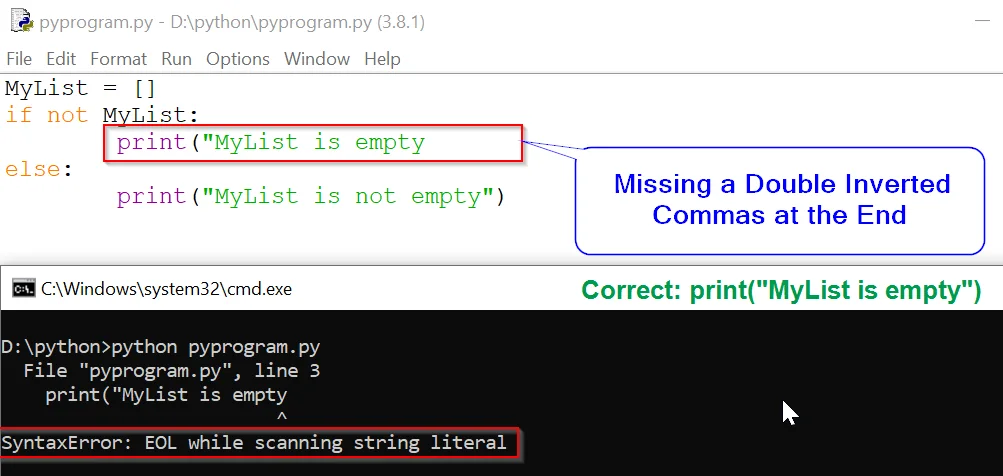


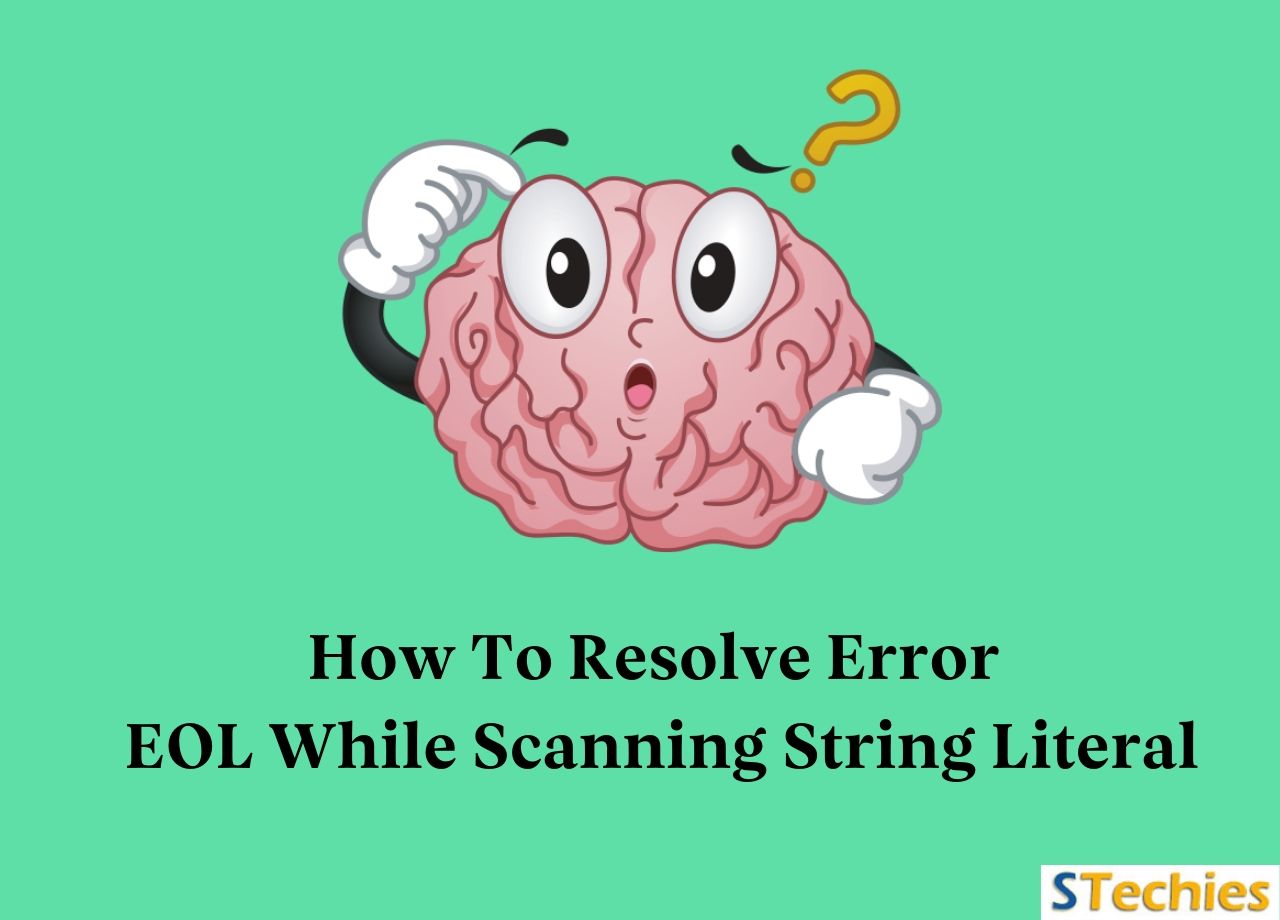
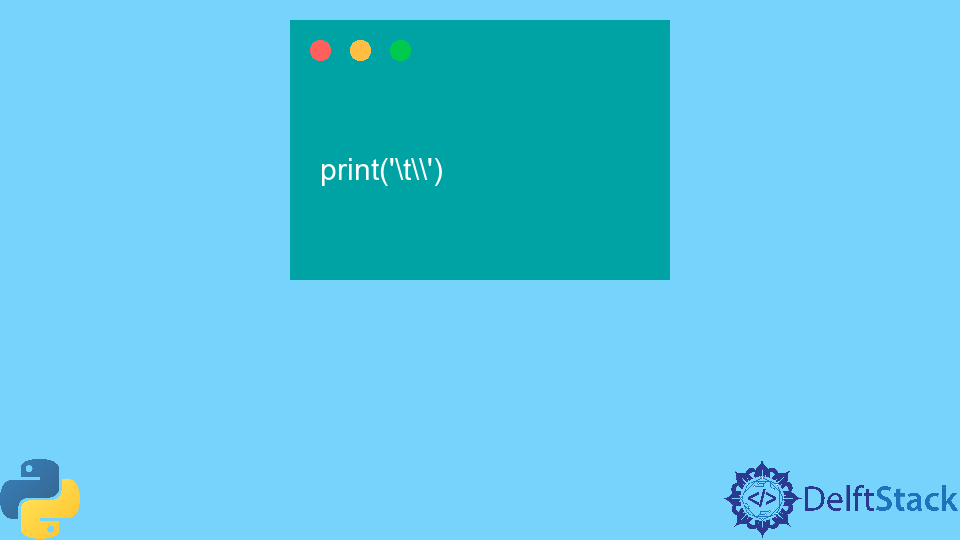














![Solved In [9]: then the whole N{EARTH GLOBE ASIA-AUSTRALIA}, | Chegg.com Solved In [9]: Then The Whole N{Earth Globe Asia-Australia}, | Chegg.Com](https://media.cheggcdn.com/study/16b/16ba6bf1-eb59-4d1a-98f8-a59770a49493/image)
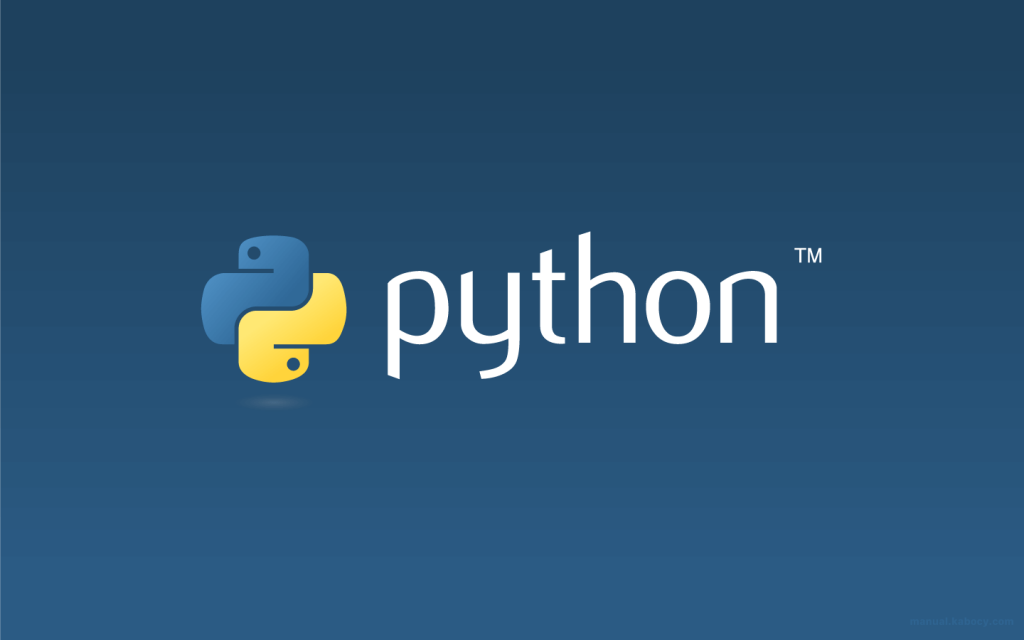


![Python error] SyntaxError: EOL while scanning string literal Python Error] Syntaxerror: Eol While Scanning String Literal](https://img1.daumcdn.net/thumb/R300x0/?fname=https://blog.kakaocdn.net/dn/1jiAT/btrnGjc9eOG/4HhK4nQEDeiK9encUPKtf0/img.png)


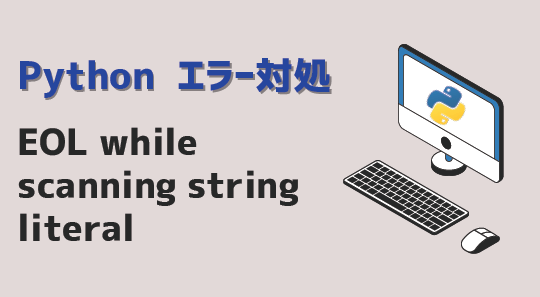
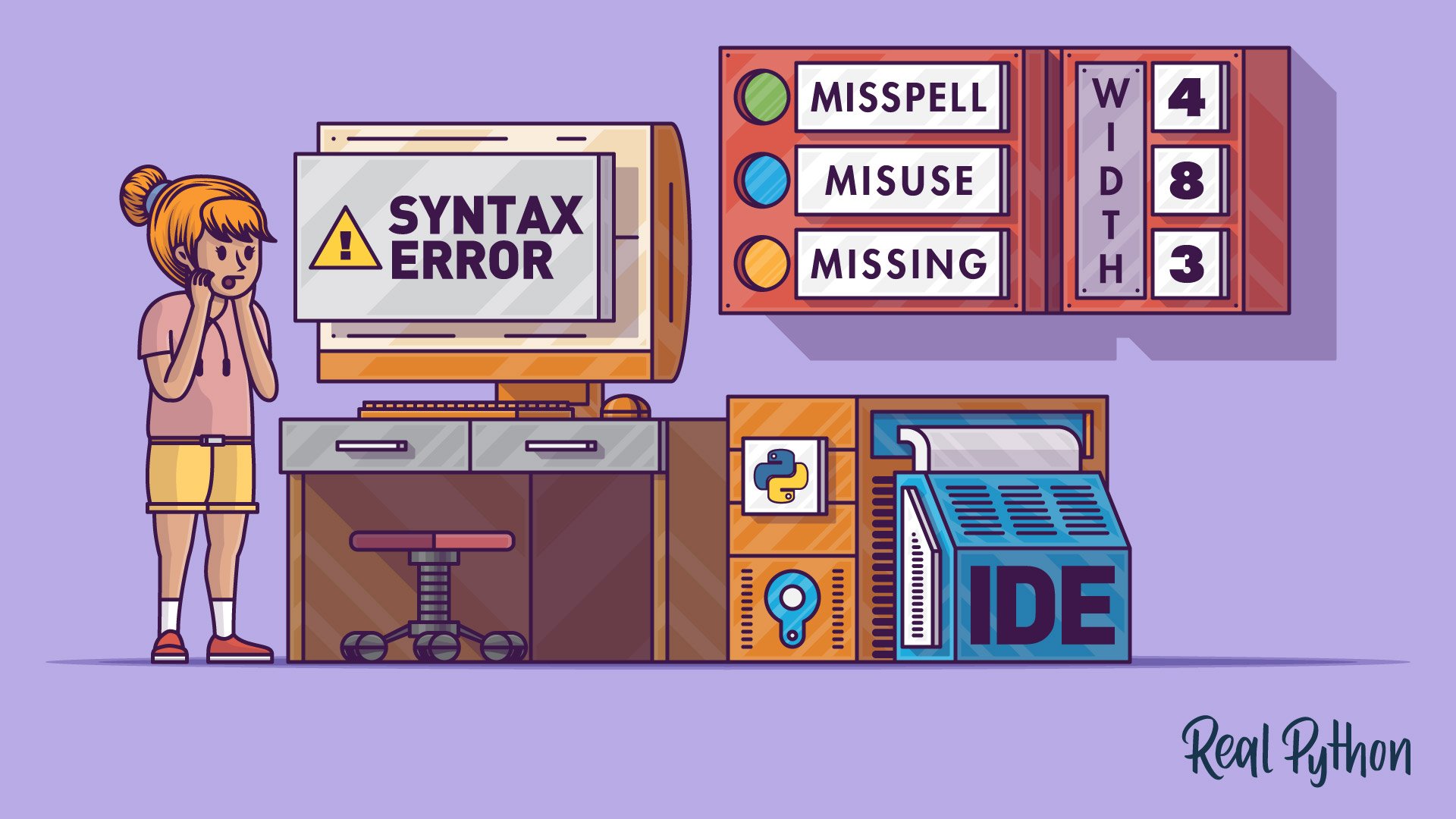
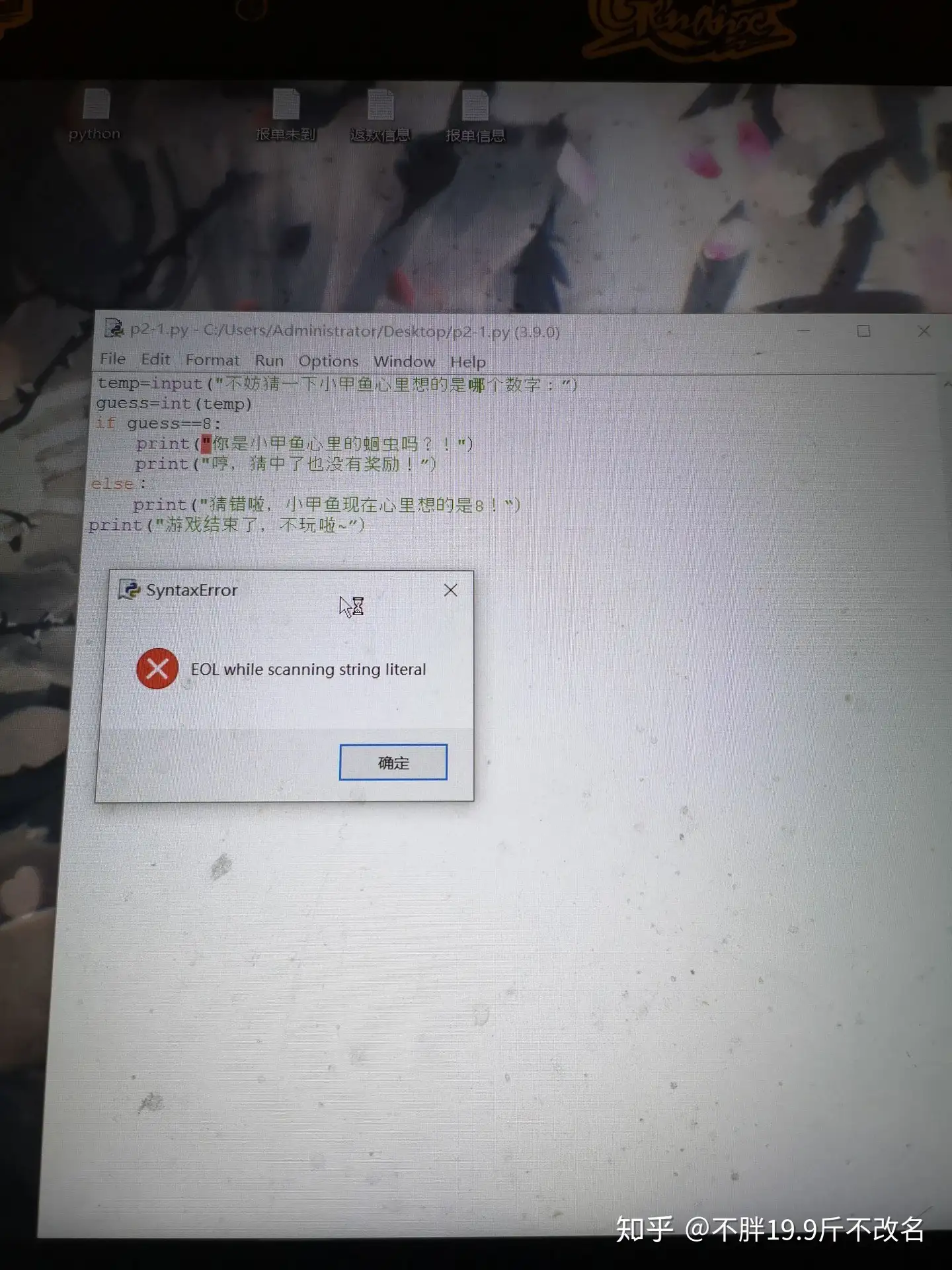




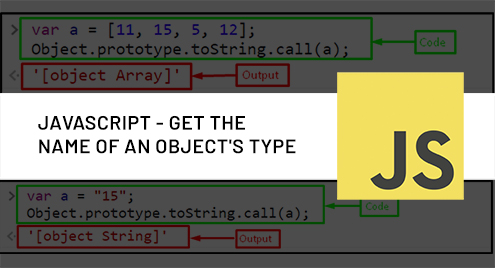
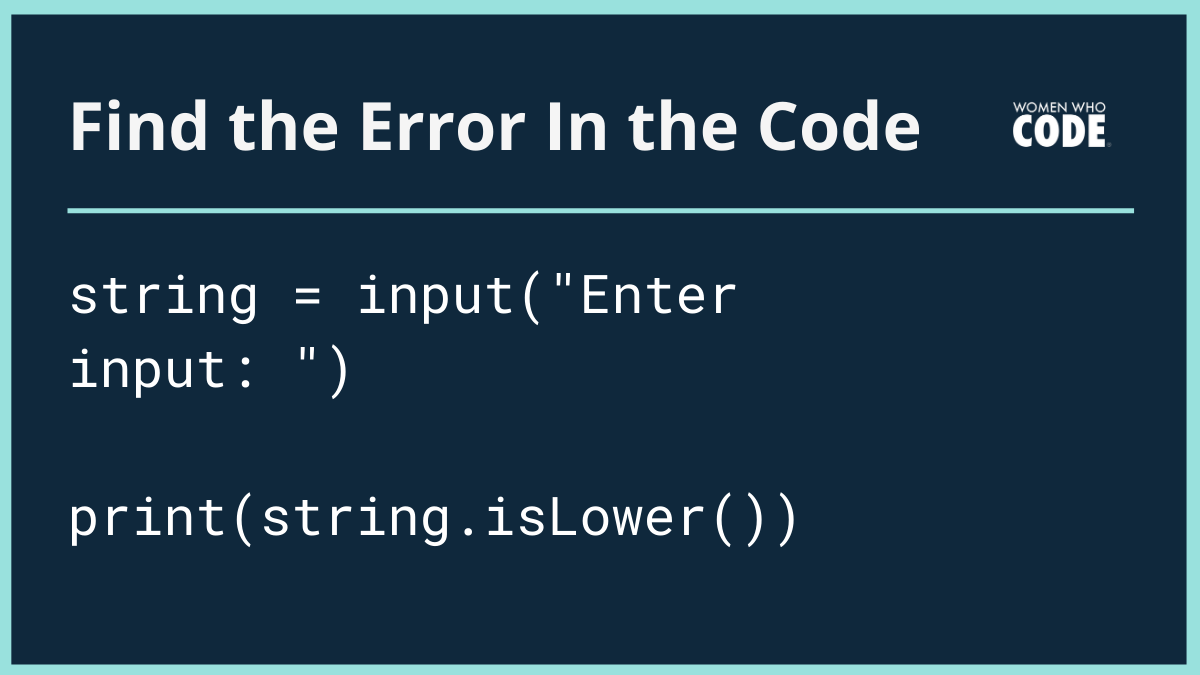







![Syntaxerror: eol while scanning string literal [SOLVED] Syntaxerror: Eol While Scanning String Literal [Solved]](https://itsourcecode.com/wp-content/uploads/2021/01/IT-SOURCECODE_ICON-07.jpg)




Article link: syntaxerror: eol while scanning string literal.
Learn more about the topic syntaxerror: eol while scanning string literal.
- Python SyntaxError – EOL while scanning string literal – Datagy
- python: SyntaxError: EOL while scanning string literal
- EOL in Python – Javatpoint
- SyntaxError- EOL while scanning string literal
- How to Handle the Unclosed String Literal Error in Java – Rollbar
- String literals – IBM
- SyntaxError- EOL while scanning … – Net-Informations.Com
- 4 Quick Solutions To EOL While Scanning String Literal Error
- Syntax Error: EOL while scanning string literal – AskPython
- How To Fix Python Error EOL While Scanning? – Skynats
- SyntaxError EOL While Scanning String Literal Fixed – STechies
- SyntaxError- EOL while scanning string literal
- Python error EOL while scanning | How to avoid – Bobcares
- Python syntaxerror: EOL while scanning string literal Solution
See more: nhanvietluanvan.com/luat-hoc